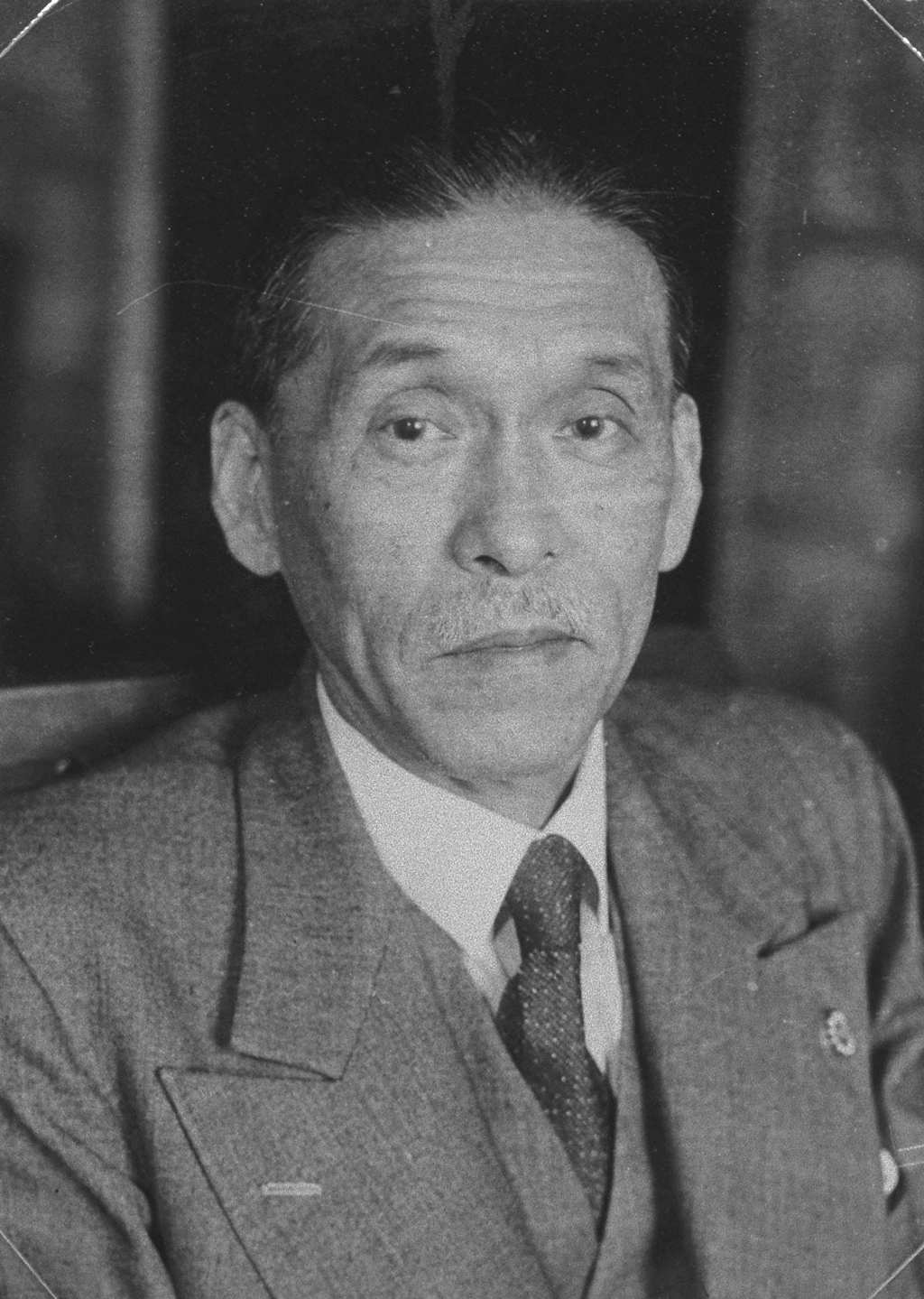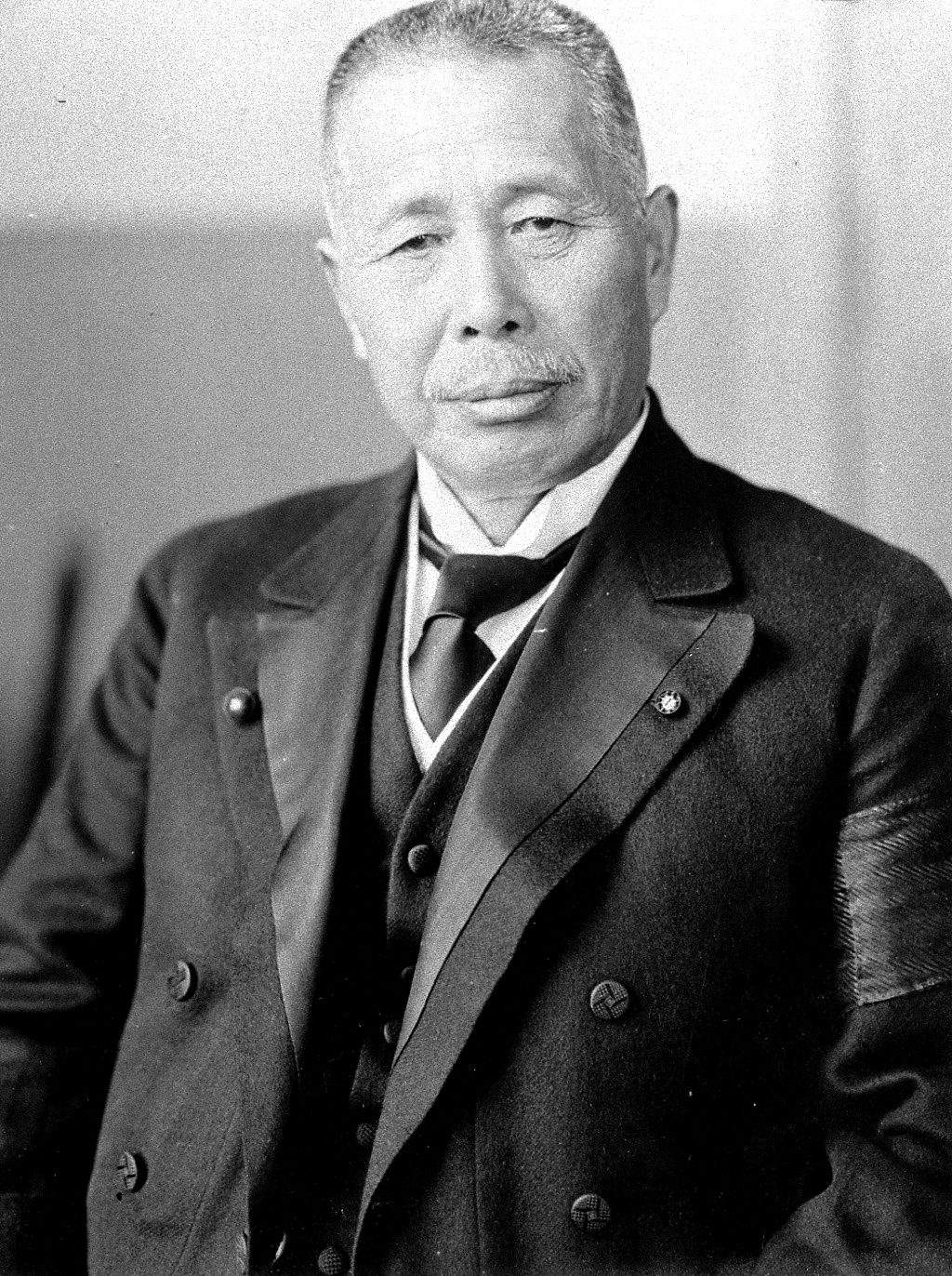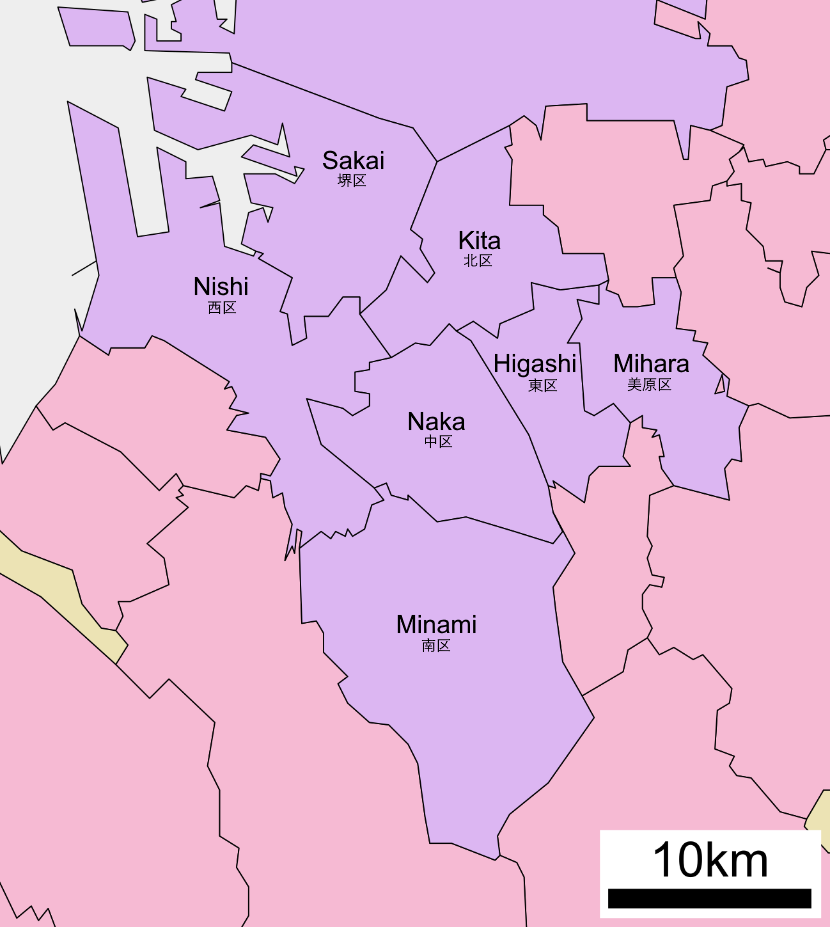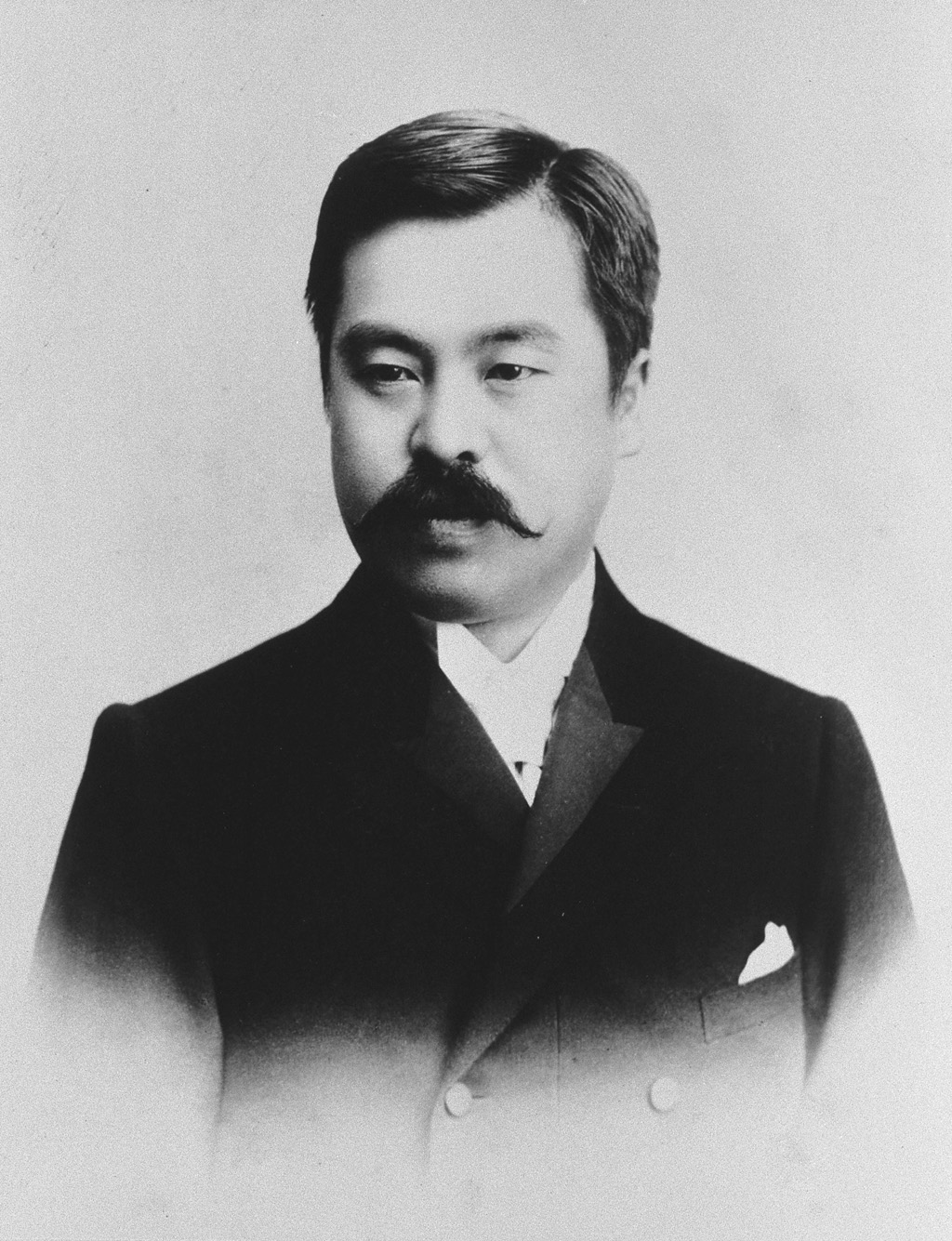|
Kijūrō Shidehara
Baron was a Japanese diplomat and politician who served as prime minister of Japan from 1945 to 1946. He was a leading proponent of pacifism in Japan before and after World War II. Born to a wealthy Osaka family, Shidehara studied law at Tokyo Imperial University and graduated in 1895. He then joined the foreign service and held postings in Korea, Europe, and the United States, serving as ambassador to the latter from 1919 to 1922. Shidehara served as foreign minister from 1924 to 1927 and from 1929 to 1931, and favored a non-interventionist policy in China. As prime minister after World War II, Shidehara set into motion many of the occupation reforms. After his tenure, he served as the president of the Progressive Party and as an adviser to Shigeru Yoshida. He was elected to the National Diet in 1947 and joined the Liberal Party, and from 1949 to 1951 served as speaker of the House of Representatives. Early life and career Shidehara was born on 13 September 1872, in Kadom ... [...More Info...] [...Related Items...] OR: [Wikipedia] [Google] [Baidu] |
Deputy Prime Minister Of Japan
The is the second highest-ranking officer of the executive branch of the government of Japan after the prime minister of Japan, and ranks first in the line of succession to the prime minister. The office of the deputy prime minister is not a permanent position, and exists only at the discretion of the prime minister. The deputy prime minister is appointed by the prime minister and must be a member of the cabinet, for instance Taro Aso served as Minister of Finance concurrently. Should the prime minister be incapacitated or resign, the deputy prime minister does not automatically succeed to the position, but instead exercises the duties of the prime minister until the National Diet , transcription_name = ''Kokkai'' , legislature = 215th Session of the National Diet , coa_pic = Flag of Japan.svg , house_type = Bicameral , houses = , foundation=29 November 1890(), leader1_type ... elects a successor. Tarō Asō was the longest-s ... [...More Info...] [...Related Items...] OR: [Wikipedia] [Google] [Baidu] |
Junior First Rank
The court ranks of Japan, also known in Japanese language, Japanese as ''ikai'' (位階), are indications of an individual's court rank in Japan based on the system of the Nation, state. ''Ikai'' as a system was the indication of the rank of bureaucrats and officials in countries that inherited (class system). Currently, the Japanese court ranks and titles are among the types of honours conferred to those who have held government posts for a long time and to those who have made distinguished achievements. In recent times, most appointments, if not all, are offered posthumously. A notable recipient of such a court rank is the late former Prime Minister of Japan, prime minister Shinzo Abe, who received Junior First Rank (従一位, ''ju ichi-i'') on 8 July 2022. Court ranks The national system for ranking politicians and officials who served the Japanese dynasty began in 603 when Empress Suiko enacted the Twelve Level Cap and Rank System. Each rank was identified by the color of ... [...More Info...] [...Related Items...] OR: [Wikipedia] [Google] [Baidu] |
Tanaka Giichi
Baron was a Japanese general and politician who served as Prime Minister of Japan from 1927 to 1929. Born to a ''samurai'' family in the Chōshū Domain, Tanaka became an officer in the Imperial Japanese Army and rose through the ranks. He served as Minister of the Army under Prime Ministers Hara Takashi and Yamamoto Gonnohyōe. After retiring from active duty he accepted the presidency of the Rikken Seiyūkai, a major conservative party. Following the resignation of the Wakatsuki Cabinet in 1927, Tanaka was appointed Prime Minister. In foreign affairs, he pursued a hawkish policy; in domestic affairs, he sought to suppress communist movements. Criticised for his handling of the unauthorised assassination of Zhang Zuolin by a Kwangtung Army officer, he resigned in 1929 and died soon afterwards. Early life and military career Tanaka was born as the third son of a low-ranking ''samurai'' family in the service of Chōshū Domain in Hagi, Nagato Province (modern day Yamaguchi ... [...More Info...] [...Related Items...] OR: [Wikipedia] [Google] [Baidu] |
Iwasaki Yatarō
was a Japanese industrialist and financier known as the founder of Mitsubishi, one of Japan's largest conglomerates. Early life Yatarō Iwasaki was born on 9 January 1835 in Aki, Tosa Province (now Kōchi Prefecture) into a provincial farming family. Iwasaki's family had been members of the ''samurai'' warrior nobility, but his great great grandfather, Iwasaki Yajiemon () had sold off his family's ''samurai'' status in obligation of debts during the Great Tenmei famine. His family derived from Iwasaki clan that was a branch of Takeda clan of Kai Province (). The ancestor of Iwasaki clan was Iwasaki Nobutaka () known as Takeda Shichirō () who was the fifth son of Takeda Nobumitsu. The Iwasaki clan served Aki clan (), and Chōsokabe clan () at the Battle of Sekigahara (October 21, 1600). Iwasaki began his career as an employee of the Yamauchi clan, the ruling clan of the Tosa Domain which had business interests in many parts of Japan. Iwasaki left for Edo aged nineteen fo ... [...More Info...] [...Related Items...] OR: [Wikipedia] [Google] [Baidu] |
Occupation Of Japan
Japan was occupied and administered by the Allies of World War II from the surrender of the Empire of Japan on September 2, 1945, at the war's end until the Treaty of San Francisco took effect on April 28, 1952. The occupation, led by the American military with support from the British Commonwealth and under the supervision of the Far Eastern Commission, involved a total of nearly one million Allied soldiers. The occupation was overseen by the US General Douglas MacArthur, who was appointed Supreme Commander for the Allied Powers by the US president Harry S. Truman; MacArthur was succeeded as supreme commander by General Matthew Ridgway in 1951. Unlike in the occupations of Germany and Austria, the Soviet Union had little to no influence in Japan, declining to participate because it did not want to place Soviet troops under MacArthur's direct command. This foreign presence marks the only time in the history of Japan that it has been occupied by a foreign power. Howe ... [...More Info...] [...Related Items...] OR: [Wikipedia] [Google] [Baidu] |
Setagaya
is a special ward in the Tokyo Metropolis in Japan. It is also the name of a neighborhood and administrative district within the ward. Its official bird is the azure-winged magpie, its flower is the fringed orchid, and its tree is the '' Zelkova serrata''. Setagaya has the largest population and second-largest area (after Ōta) of Tokyo's special wards. As of July 1, 2023, the ward has an estimated population of 940,071, and a population density of 16,194 persons per km2 with the total area of 58.06 km2. Life expectancy As of 2023, the female life expectancy in Setagaya is 88.9 years. Geography Setagaya is located at the southwestern corner of the Tokyo's special wards and the Tama River separates the boundary between Tokyo Metropolis and Kanagawa Prefecture. Residential population is among the highest in Tokyo as there are many residential neighbourhoods within Setagaya. Setagaya is served by various rail services providing frequent two- to three-minute headway r ... [...More Info...] [...Related Items...] OR: [Wikipedia] [Google] [Baidu] |
Japan
Japan is an island country in East Asia. Located in the Pacific Ocean off the northeast coast of the Asia, Asian mainland, it is bordered on the west by the Sea of Japan and extends from the Sea of Okhotsk in the north to the East China Sea in the south. The Japanese archipelago consists of four major islands—Hokkaido, Honshu, Shikoku, and Kyushu—and List of islands of Japan, thousands of smaller islands, covering . Japan has a population of over 123 million as of 2025, making it the List of countries and dependencies by population, eleventh-most populous country. The capital of Japan and List of cities in Japan, its largest city is Tokyo; the Greater Tokyo Area is the List of largest cities, largest metropolitan area in the world, with more than 37 million inhabitants as of 2024. Japan is divided into 47 Prefectures of Japan, administrative prefectures and List of regions of Japan, eight traditional regions. About three-quarters of Geography of Japan, the countr ... [...More Info...] [...Related Items...] OR: [Wikipedia] [Google] [Baidu] |
Kadoma, Osaka
file:Kadoma City Hall.jpg, 270px, Kadoma City Hall is a Cities of Japan, city located in Osaka Prefecture, Japan. , the city had an estimated population of 116,511 in 64301 households and a population density of 9680 persons per km2. The total area of the city is . Geography Kadoma is located in the east-central part of Osaka Prefecture, adjacent to the Osaka metropolis, of which it is a satellite city. The city is approximately 4.9 kilometers east–west by 4.3 kilometers north–south, with the Furukawa River running through the center. Neighboring municipalities Osaka Prefecture * Moriguchi, Osaka, Moriguchi * Neyagawa, Osaka, Neyagawa * Tsurumi-ku, Osaka, Tsurumi-ku Climate Kadoma has a Humid subtropical climate (Köppen ''Cfa'') characterized by warm summers and cool winters with light to no snowfall. The average annual temperature in Kadoma is 15.6 °C. The average annual rainfall is 1475 mm with September as the wettest month. The temperatures are highest on av ... [...More Info...] [...Related Items...] OR: [Wikipedia] [Google] [Baidu] |
Empire Of Japan
The Empire of Japan, also known as the Japanese Empire or Imperial Japan, was the Japanese nation state that existed from the Meiji Restoration on January 3, 1868, until the Constitution of Japan took effect on May 3, 1947. From Japan–Korea Treaty of 1910, 1910 to Japanese Instrument of Surrender, 1945, it included the Japanese archipelago, the Kuril Islands, Kurils, Karafuto Prefecture, Karafuto, Korea under Japanese rule, Korea, and Taiwan under Japanese rule, Taiwan. The South Seas Mandate and Foreign concessions in China#List of concessions, concessions such as the Kwantung Leased Territory were ''de jure'' not internal parts of the empire but dependent territories. In the closing stages of World War II, with Japan defeated alongside the rest of the Axis powers, the Japanese Instrument of Surrender, formalized surrender was issued on September 2, 1945, in compliance with the Potsdam Declaration of the Allies of World War II, Allies, and the empire's territory subsequent ... [...More Info...] [...Related Items...] OR: [Wikipedia] [Google] [Baidu] |
Sakai
is a city located in Osaka Prefecture, Japan. It has been one of the largest and most important seaports of Japan since the medieval era. Sakai is known for its '' kofun'', keyhole-shaped burial mounds dating from the fifth century. The ''kofun'' in Sakai include the largest grave in the world by area, Daisen Kofun. Once known for swords, Sakai is now famous for the quality of its cutlery. , the city had an estimated population of 819,965, making it the fourteenth most populous city in Japan (excluding Tokyo). Geography Sakai is located in southern Osaka Prefecture, on the edge of Osaka Bay and directly south of the city of Osaka. Neighboring municipalities Osaka Prefecture * Habikino * Izumi * Kawachinagano * Matsubara *Osaka * Ōsakasayama * Takaishi Climate Sakai has a Humid subtropical climate (Köppen ''Cfa'') characterized by warm summers and cool winters with light to no snowfall. The average annual temperature in Sakai is . The average annual rainfall is with June ... [...More Info...] [...Related Items...] OR: [Wikipedia] [Google] [Baidu] |
House Of Peers (Japan)
The was the upper house of the National Diet#History, Imperial Diet as mandated under the Meiji Constitution, Constitution of the Empire of Japan (in effect from 11 February 1889 to 3 May 1947). Background In 1869, under the new Meiji government, a Japanese peerage was created by an Imperial decree merging the former court nobility ''(kuge)'' and former feudal lords (''daimyos'') into a single new Aristocracy (class), aristocratic Social class, class called the ''kazoku.'' A second imperial ordinance in 1884 grouped the ''kazoku'' into five ranks equivalent to the European Aristocracy (class), aristocrats: prince (equivalent to a European duke), marquess, count, viscount, and baron. Although this grouping idea was taken from the European peerage, the Japanese titles were taken from Chinese language, Chinese and based on the ancient Social structure of China, feudal system in China. Itō Hirobumi and the other Meiji period, Meiji leaders deliberately modeled the chamber on the ... [...More Info...] [...Related Items...] OR: [Wikipedia] [Google] [Baidu] |
Osaka 3rd District (1947–1993)
, the House of Representatives of Japan is elected from a combination of multi-member districts and single-member districts, a method called parallel voting. Currently, 176 members are elected from 11 multi-member districts (called proportional representation blocks or PR blocks) by a party-list system of proportional representation (PR), and 289 members are elected from single-member districts, for a total of 465. 233 seats are therefore required for a majority. Each PR block consists of one or more Prefectures of Japan, prefectures, and each prefecture is divided into one or more single-member districts. In general, the block districts correspond loosely to the major regions of Japan, with some of the larger regions (such as Kantō region, Kantō) subdivided. History Until the 1993 Japanese general election, 1993 general election, all members of the House of Representatives were elected in multi-member constituencies by single non-transferable vote. In 1994, Parliament passed ... [...More Info...] [...Related Items...] OR: [Wikipedia] [Google] [Baidu] |









